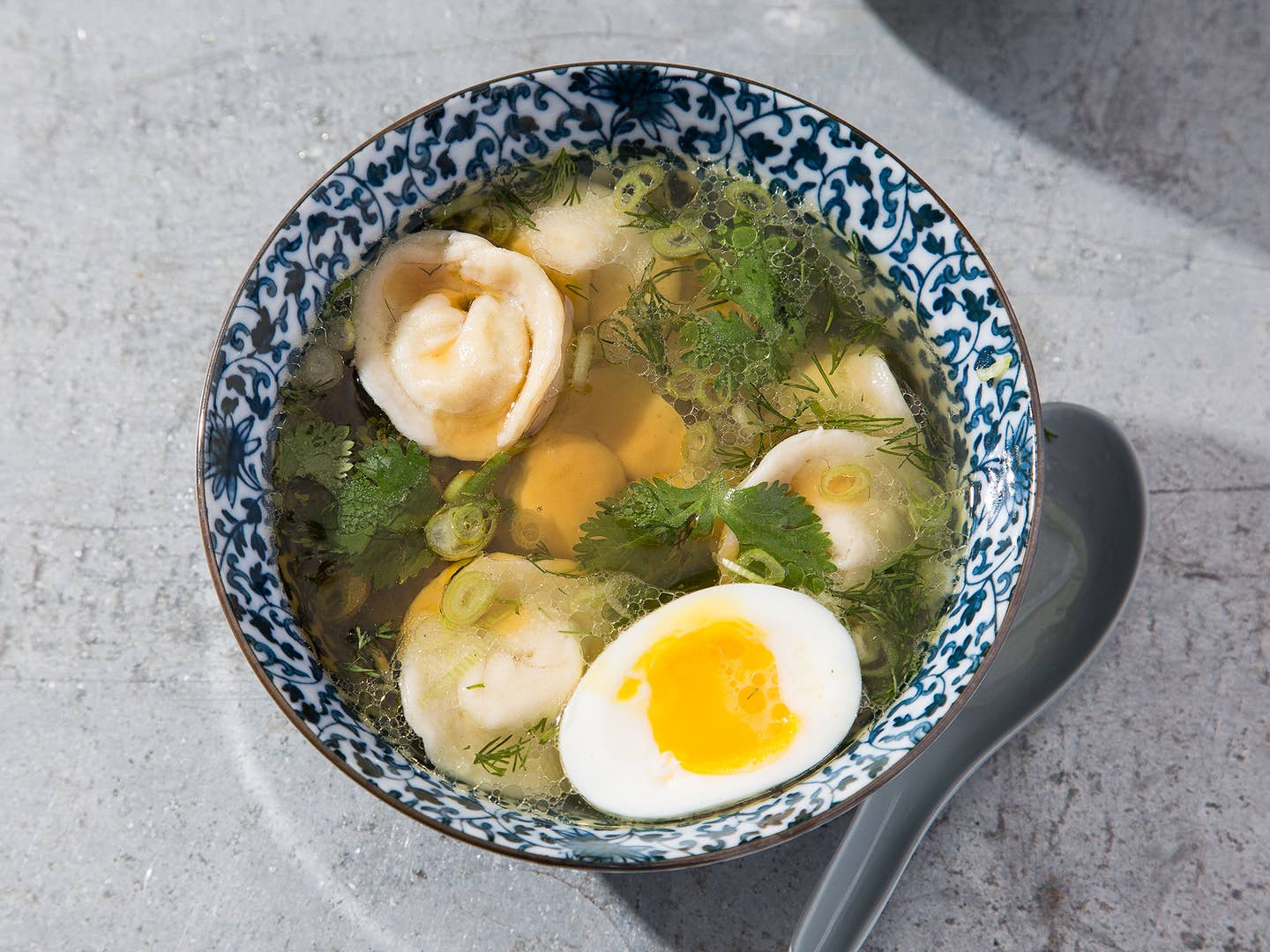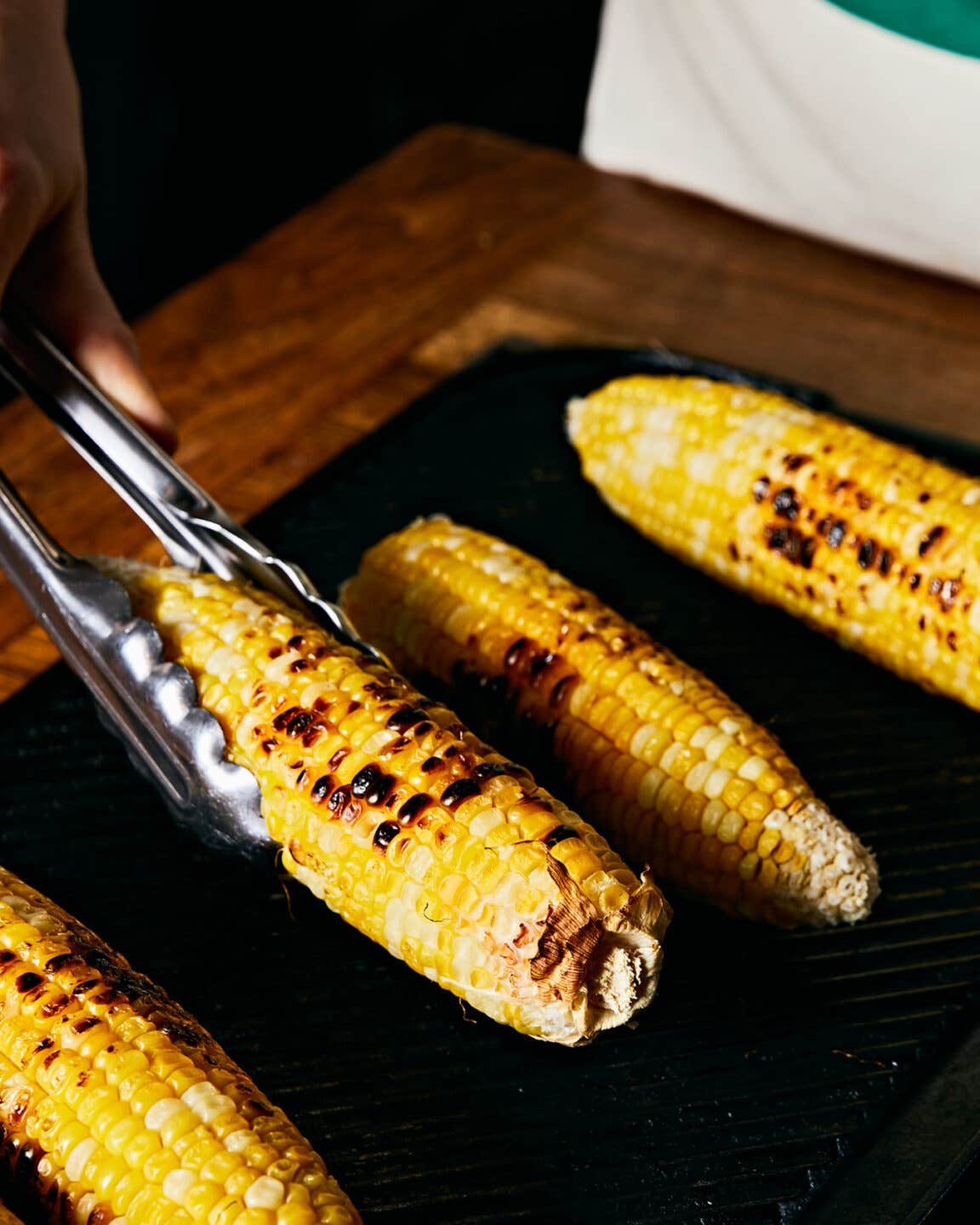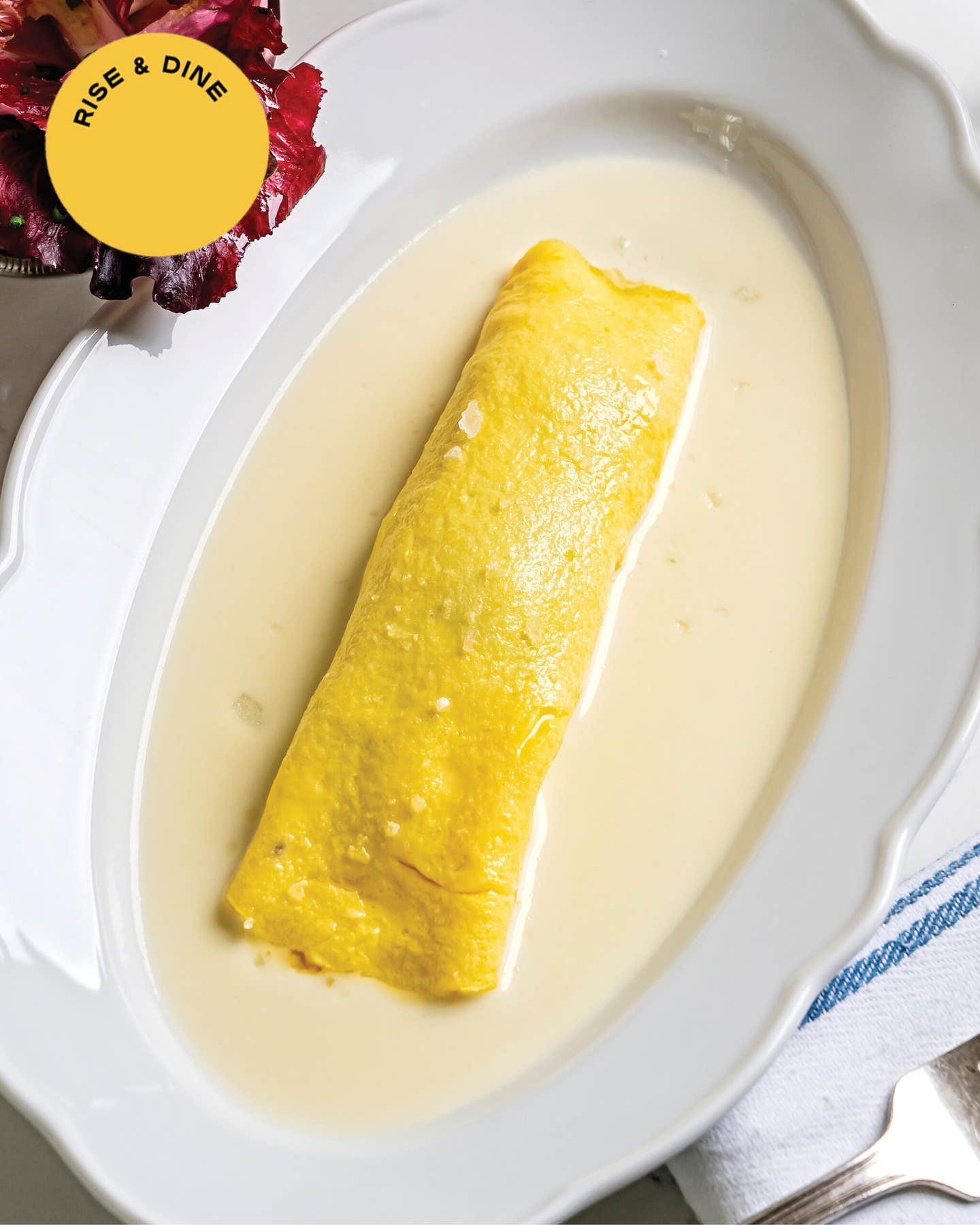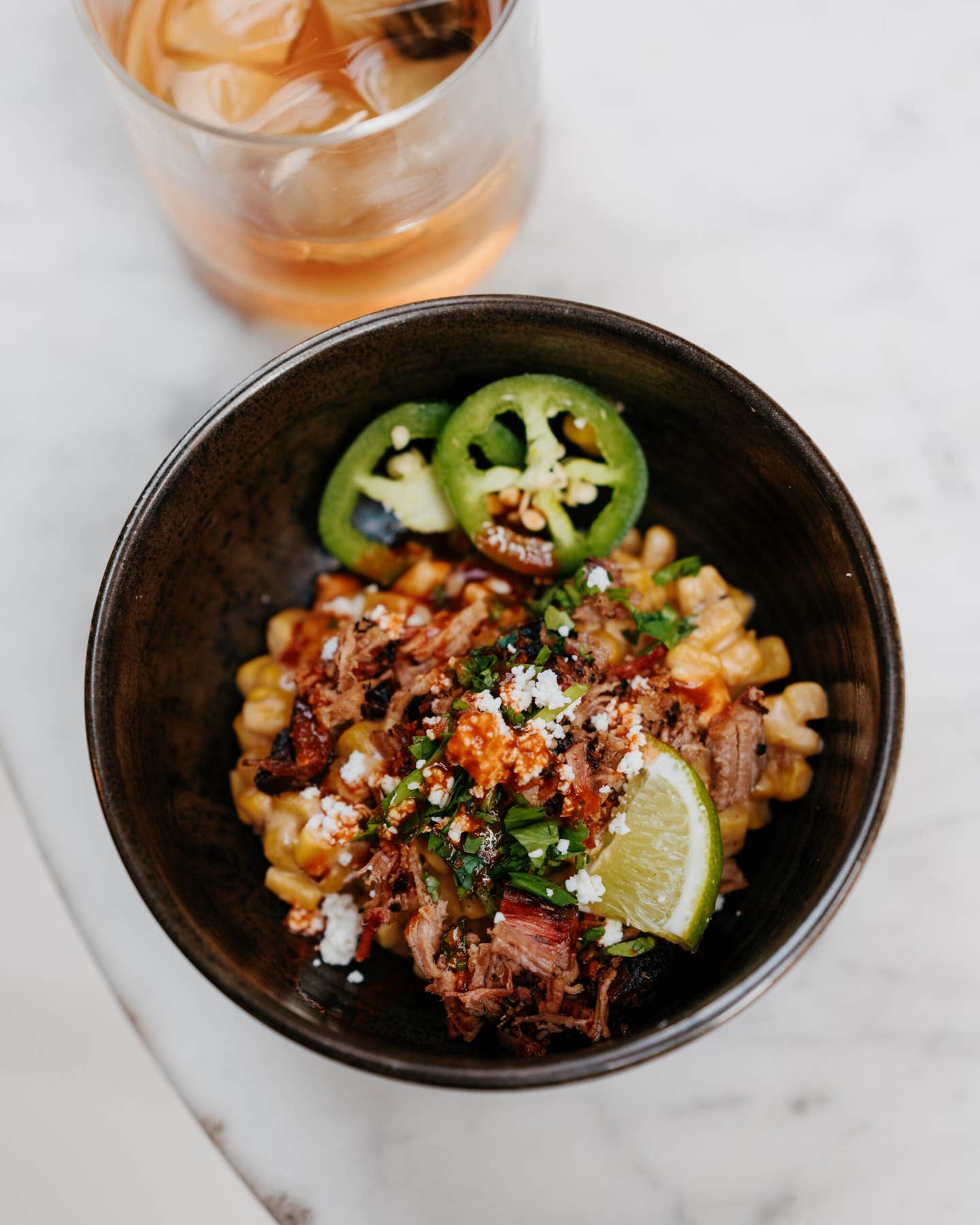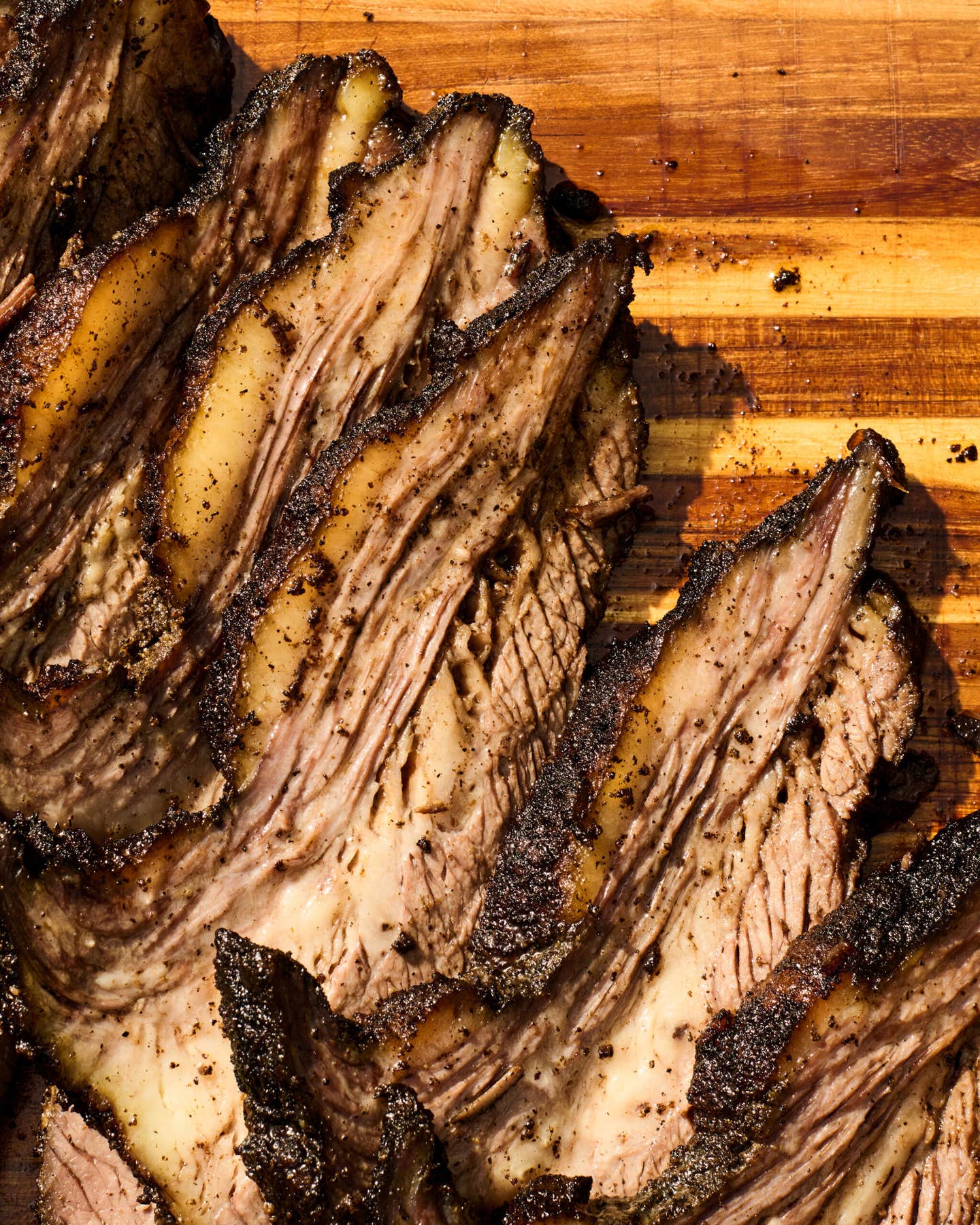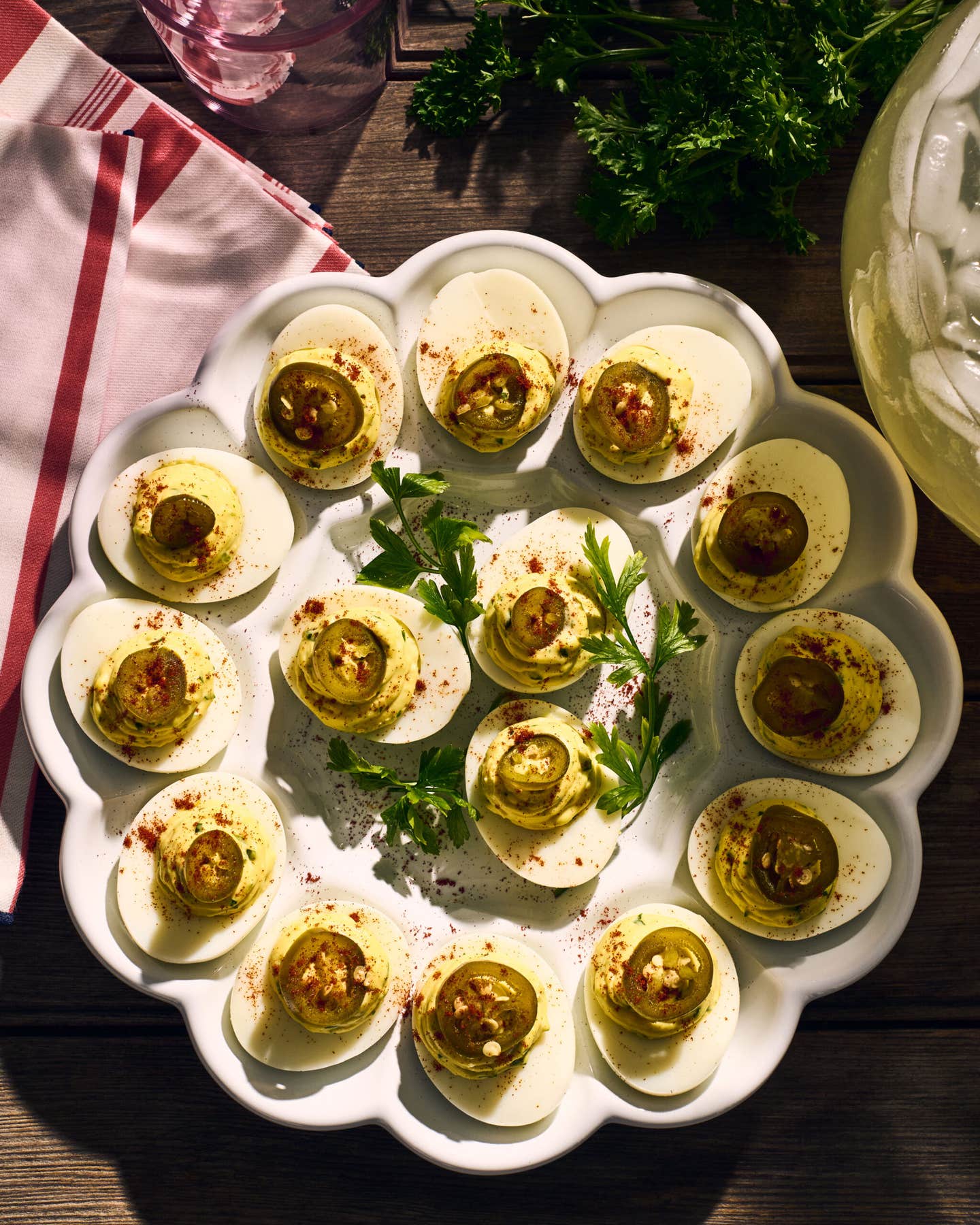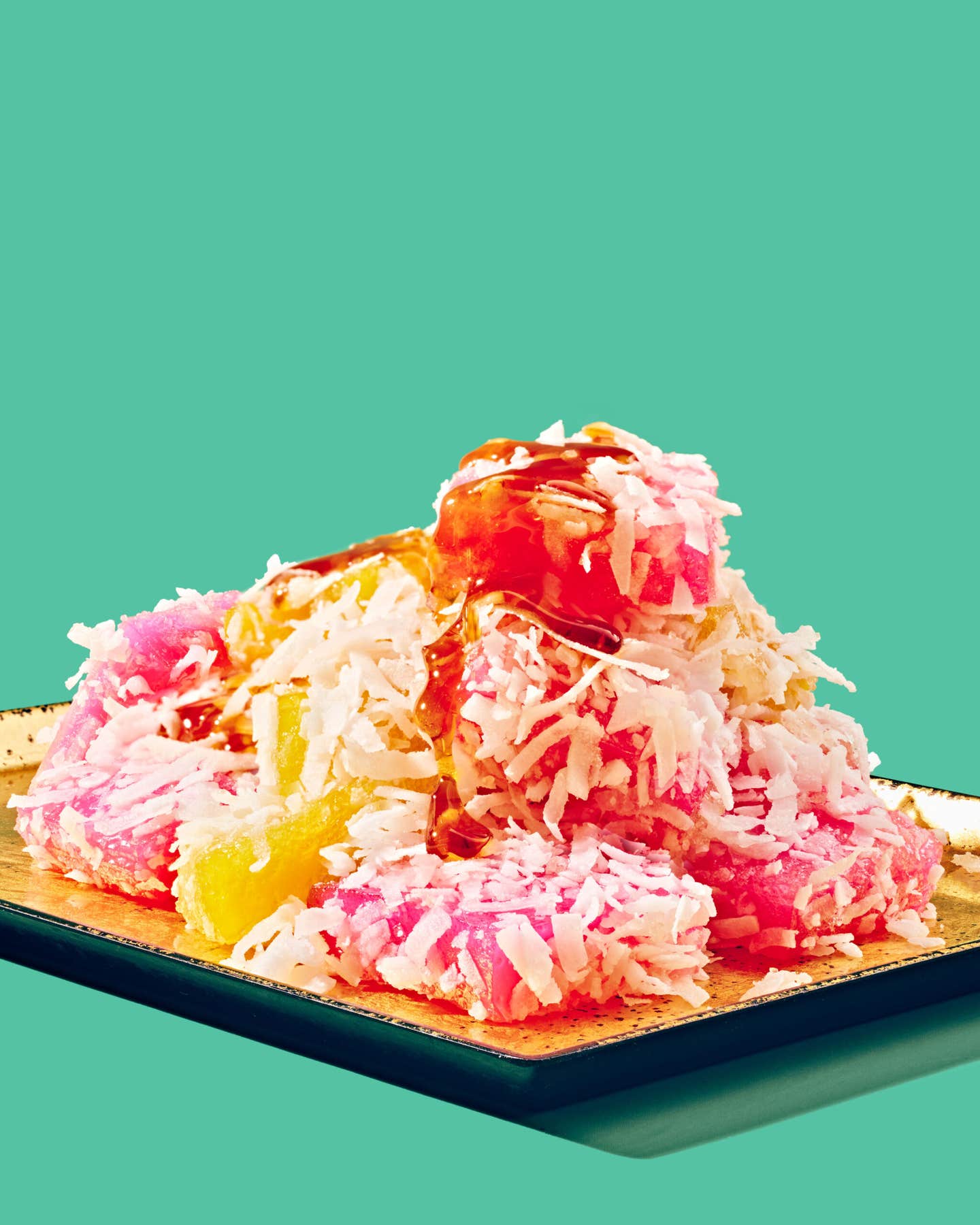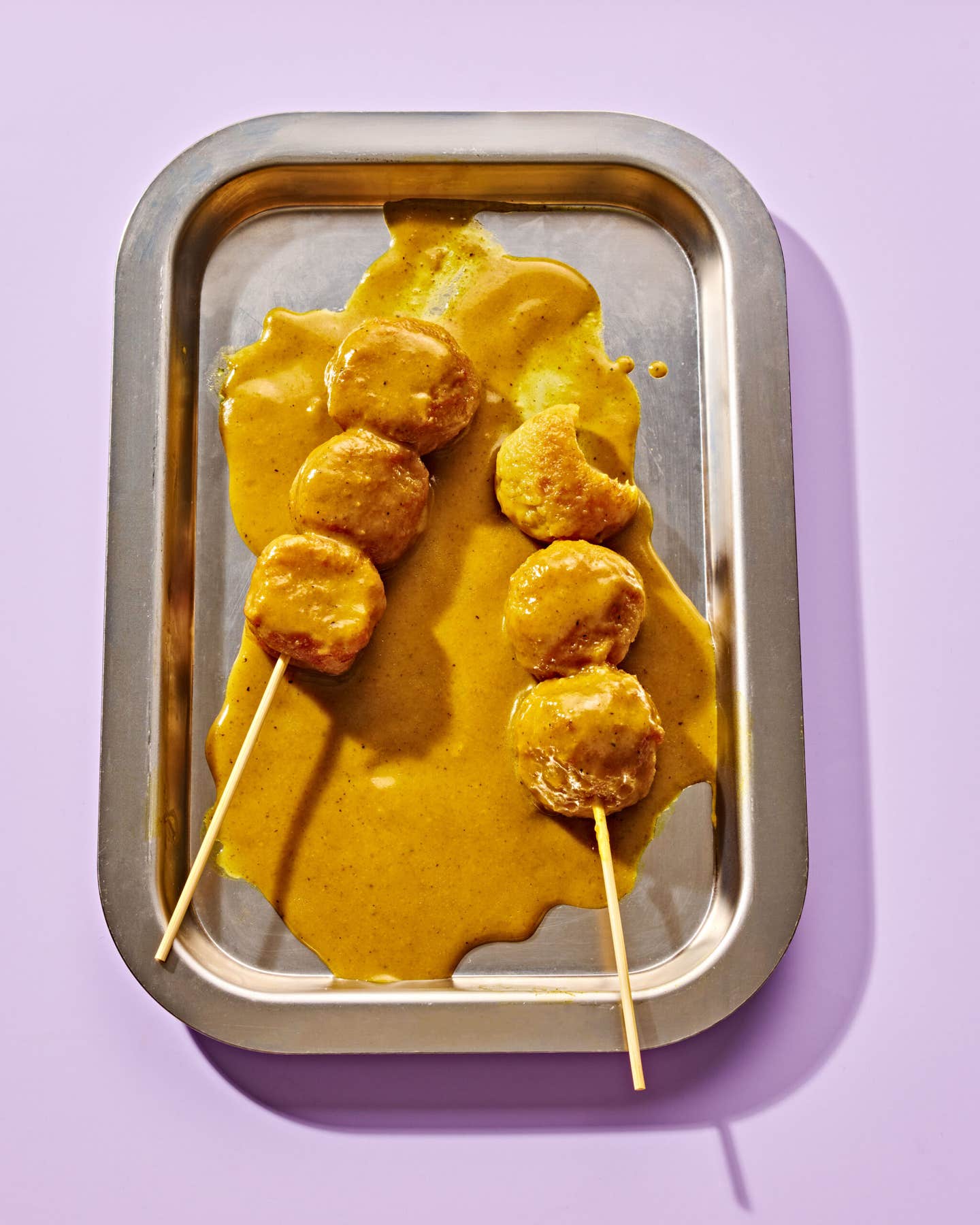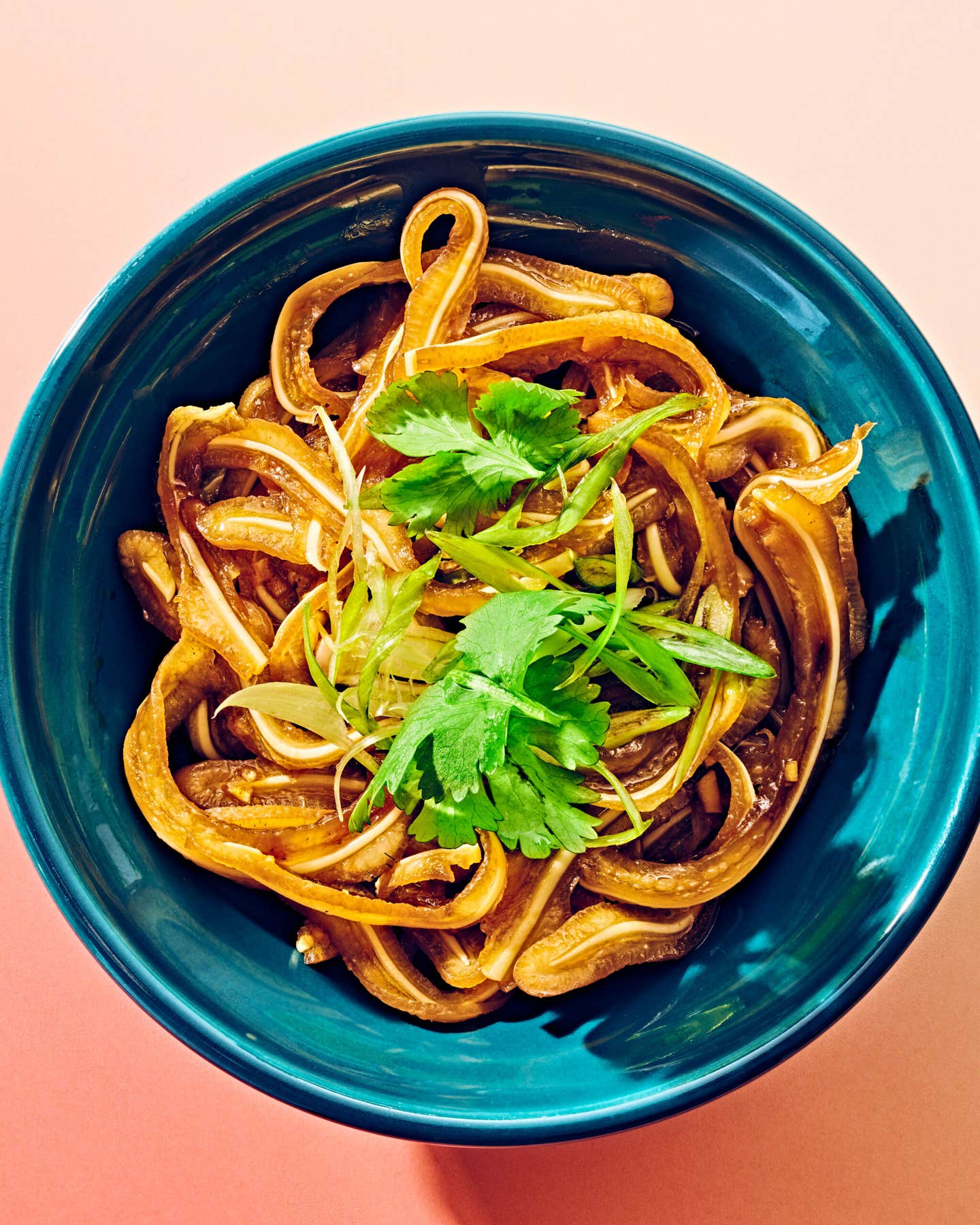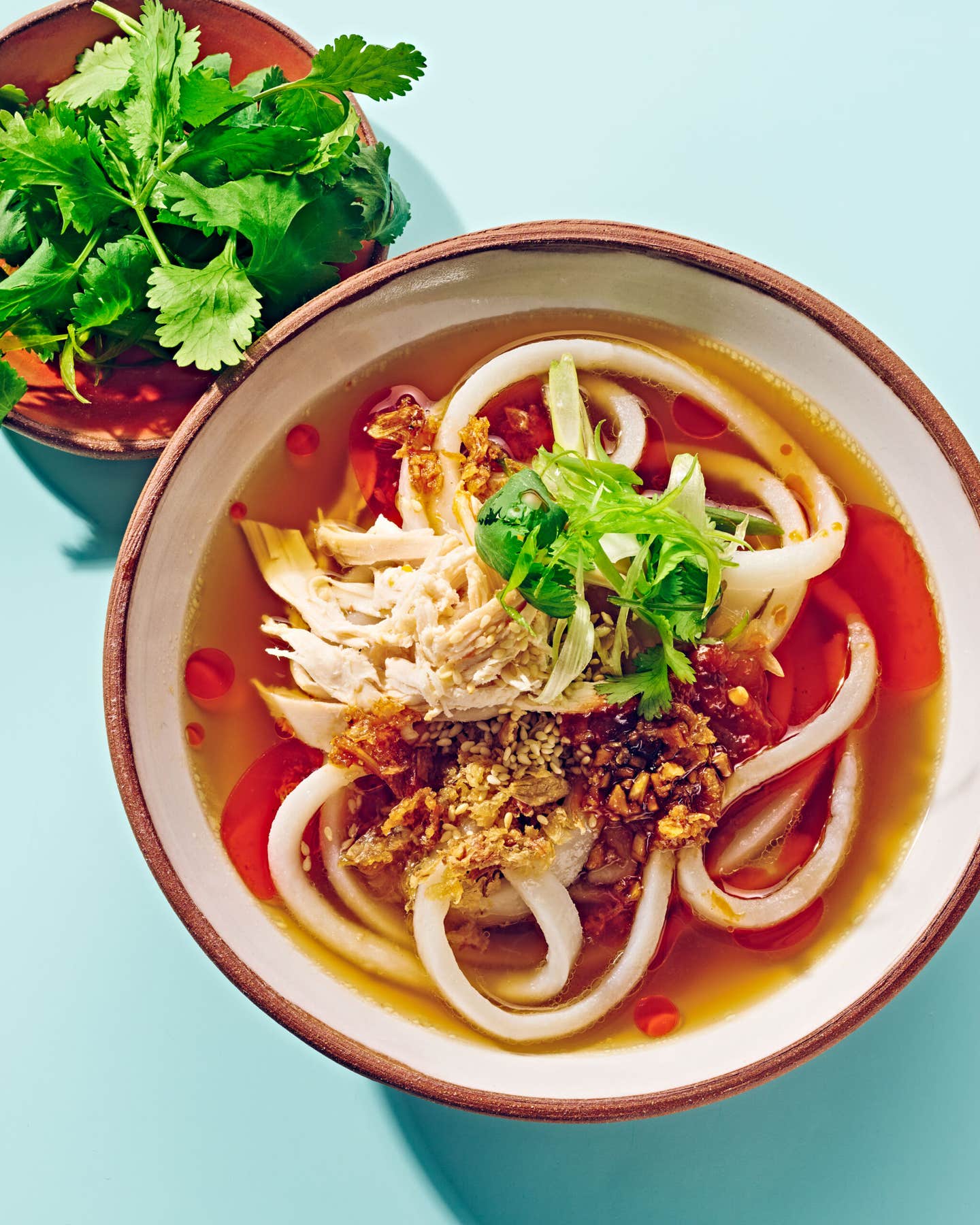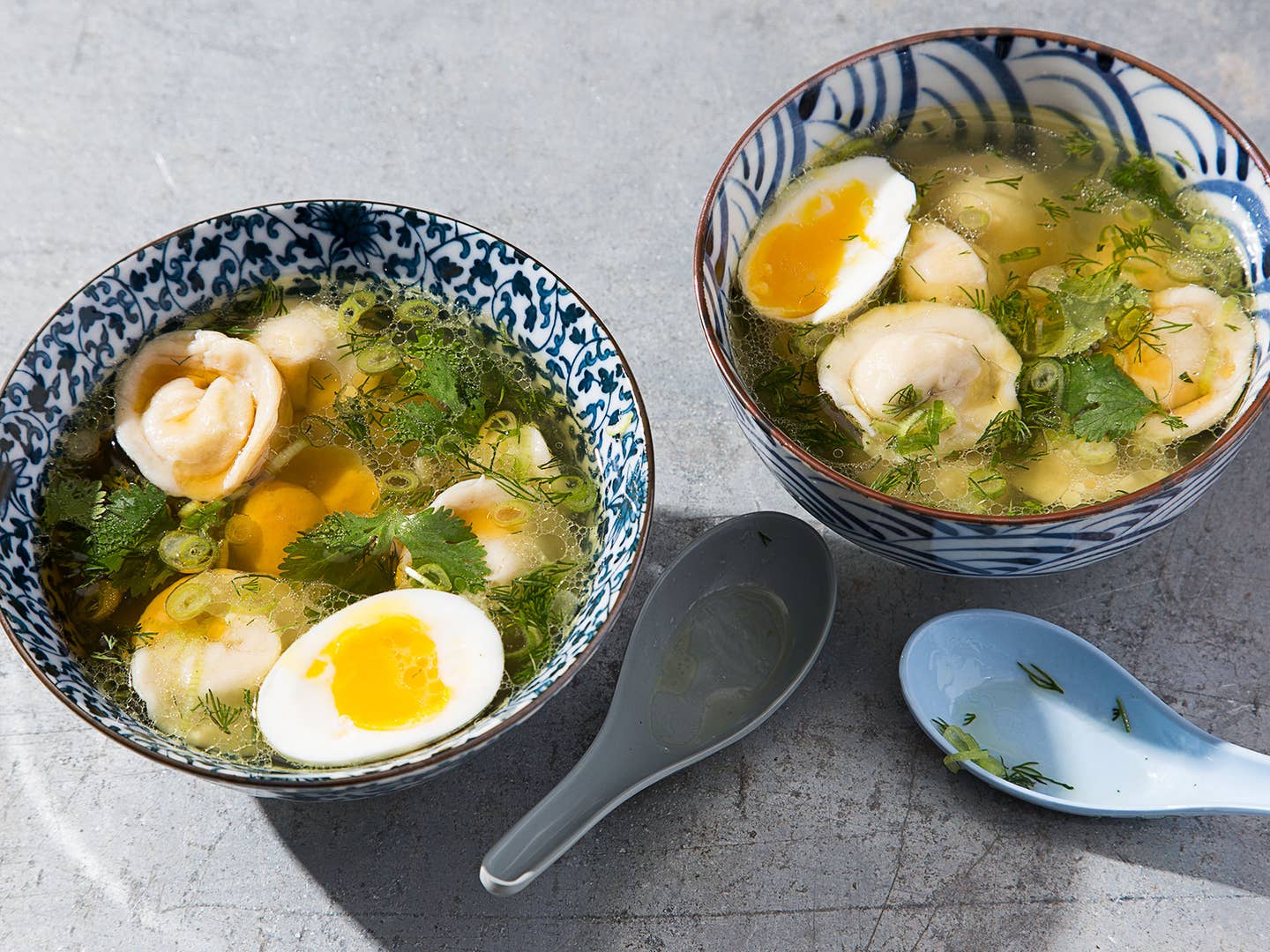
American chicken and dumplings, Chinese wonton soup, Korean manduguk… Many cultures have their own versions of that most comforting of comfort foods: a bowl of tender, meat-filled dumplings paddling through warm, salty broth.
In Russia, that dish is pelmeni, crescent-shaped dumplings that purportedly hail from Siberia, served in a simple chicken broth. But at Bear, a homey Eastern European restaurant in Astoria, Queens, customers have started calling it something else: Russian Ramen.
In 2011, Ukranian refugee and chef Natasha Pogrebinsky started serving a pelmeni stew she called "Siberian Express," adding marinated mushrooms, brined cherry tomatoes, fresh herbs, scallions, and a soft-boiled egg all to color up the dish's otherwise beige landscape. The Russian Ramen name stuck, and as of last month, Bear's menu officially offers five types of Russian Ramen.
"Instead of ramen noodles with sliced pork belly in the bowl, the meat and noodles are together in one, in dumpling form," says Pogrebinsky. "The idea and the components are all akin to ramen—it looks like ramen, it's textured like ramen—but the actual ingredients are very Russian."
Russian Chicken and Dumplings Soup
Sesame oil and cilantro soup up this Russian classic with an eye on Japan. Get the recipe for Russian Chicken and Dumplings Soup »
That said, what is "very Russian" might surprise you. Pogrebinsky's recipe, for example, calls for cilantro and sesame oil, two flavors more associated with Asian cuisine but that are actually "deeply rooted in Russian culinary culture. Cilantro, for example, is a common garnish in the Ukraine and in eastern Russia, and a common component of sauces such as tkemali and satsebeli as well as baklazhano-vaya ikra, or eggplant "caviar" spread. You'll find sesame oil in confections such as halva or in stuffed savory breads like chebureki.
"The popular conception of Russian food is one-directional: beets, cabbage, and meat, and that's it," says Pogrebinsky. "The beauty of Russia is that it's surrounded by Europe, the Middle East, and Asia, and its food is influenced by all of those places." There's a lot of room for variation, too, when you're a 6.6 million square-mile country spanning from Europe to Asia. "Siberians, for example, are a whole different brand of people--they look different, they talk different, and they eat different—even though we're all considered under one roof of 'Russian culture.'"
So don’t feel too confined by the exact ingredients in this recipe. Instead of marinated mushrooms, go the Siberian route with sauerkraut, spinach, or tangy sorrel. Less optional is the ice-cold vodka planted on the table.
Get the recipe for Natasha Pogrebinsky's Russian Ramen »
Julia Bainbridge is a classically trained cook and food writer. Formerly the food editor at Yahoo Food, where one of her stories was nominated for a 2015 James Beard Award, and a senior editor at Bon Appétit, she has also worked at Condé Nast Traveler and Food & Wine, and her writing has appeared in Travel + Leisure, Playboy, and Organic Life. She throws a lot of dinner parties. (A lot.)
Keep Reading
Continue to Next Story
